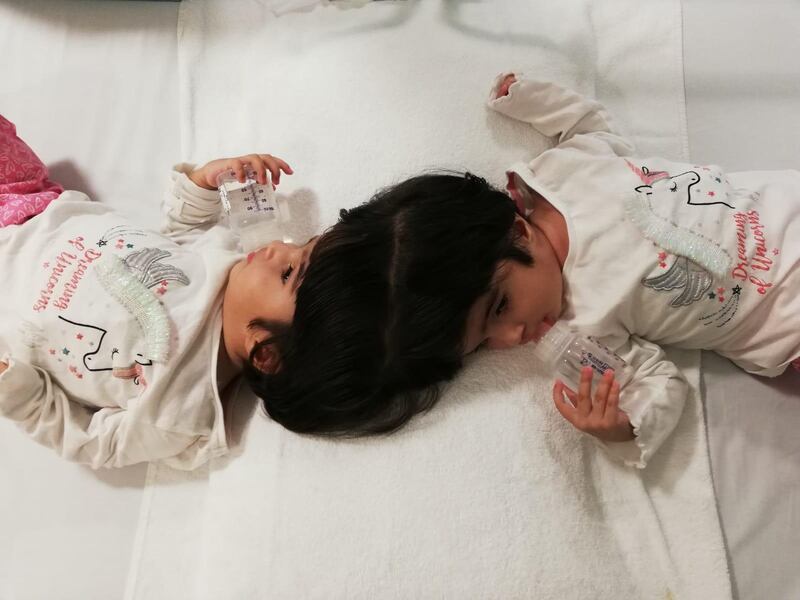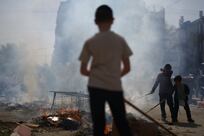The two leading surgeons who separated rare conjoined twins at London’s UAE-funded Great Ormond Street Hospital hope their success will help more children born with the condition across the world.
Safa and Marwa Ullah, now two, from Charsadda in Pakistan, were born as craniopagus twins fused at the head in January 2017.
The girls, who were brought to London last August, were separated in February after three major surgeries totalling more than 50 hours.
Safa and Marwa are the third pair of craniopagus twins that paediatric neurosurgeon Noor Ul Owase Jeelani has separated at GOSH but their condition presented a new set of challenges.
The girls, whose father died before they were born, were joined at the crown of their heads with intertwined brains and blood vessels.
By the time funds had been raised for the treatment the twins were already 19 months old. The ideal time to separate craniopagus twins is between the ages of six months and 12 months.
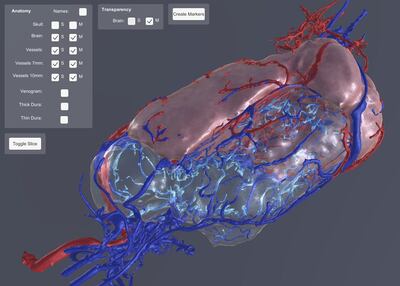
Mr Jeelani first heard about the girls when they were 3 months-old. An Urdu-speaker who originally hails from Kashmir, he was called by a neurosurgeon in Peshawar, who asked for help because their hospital did not have the expertise or facilities to safely carry out the separation.
Mr Jeelani said he felt a “moral obligation” to help and - after a series of Skype conferences with the hospital in Peshawar and a thorough examination of CT and MRI scans - decided he and the team at GOSH could separate the twins.
But finding enough money proved difficult. The initial funds to get the girls and their mother, Zainab Ullah, over to the UK to have assessments were given by a charity.
It took 15 months for the rest of the money to be raised, which came via a private donation in a matter of minutes.
"I was having dinner with a friend. I was telling her how discouraged I'd become. I said something like: 'I've lost faith in humanity – there's just so much money around and these girls are so deserving'," Mr Jeelani told The National.
Mr Jeelani’s friend made a phone call over dinner to Pakistani businessman Murtaza Lakhani, passing the phone over to the neurosurgeon.
“We spoke for quite literally two minutes after which he agreed to fund the whole thing,” he recalled.
Only one in every 2.5 million births produces conjoined twins – and only five percent of those are craniopagus. We spoke to surgeons Owase and David about the extraordinary process of separating them. https://t.co/aKrOCMGu3q 👶🏽👶🏽 pic.twitter.com/ihpIWvlYP0
— Great Ormond Street Hospital (@GreatOrmondSt) July 15, 2019
While the twins’ age was not on their side, advancements in technology since GOSH’s last craniopagus separation in 2011 meant the 100-strong team of surgeons, anaesthetists, nurses and other medical experts at GOSH had cutting-edge techniques to help them carry out the treatment.
The team used virtual reality to create an exact replica of the girls' heads, enabling them to see the structure of their fused skulls and the complex positioning of their brains and blood vessels. Graphics were provided by a London-based special effects company that has previously worked on Netflix hit Black Mirror.
As well as technological advancements on their side, Safa and Marwa had the support of the team at GOSH, who were determined both of them would survive the separation.
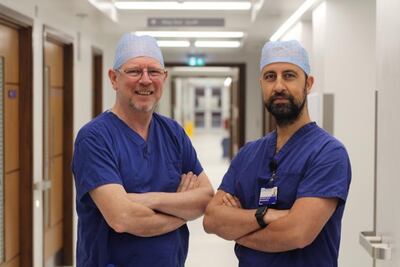
Mr Jeelani and GOSH colleague craniofacial surgeon Professor David Dunaway only agree to perform the procedures if they think both twins can survive and have a better quality of life separated.
But making sure both children survived the surgery was a challenge because of their different physiological needs.
“One of the great difficulties that the anaesthetists have is that the two twins are separate people but they are joined,” Professor Dunaway explained.
“If you have one high pressure twin thats heart is beating very slowly and one low pressure twin where the heart is beating very quickly, if you give one drug to one twin, it ends up in the other. So what they can do is really quite limited.”
During the second surgery, which totalled more than 20 hours, the team were worried they might lose Marwa when blood clots formed in Safa’s neck veins and she began to shunt blood to her sister.
Mr Jeelani made the decision during the surgery to give Marwa, who was considered to be the weaker twin, a key vein that the sisters shared. But this resulted in Safa having a stroke later on, leaving her in a critical condition after the surgery.
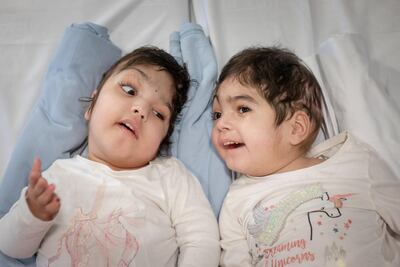
But luckily, the girls recovered enough to have the final surgery to separate them just a few months later. Professor Dunaway and the team crafted new skulls from the girls’ own bone and used tissue expanders to stretch their skin over their heads.
Five months after they were officially separated, the twins have been discharged from GOSH and are receiving physiotherapy to help them sit up, having spent their entire lives lying down. While it is thought they may have some cognitive impairment, the surgeons hope they will be able to walk in the future with further treatment.
The future looks bright for both Safa and Marwa. After their final surgery, they began their recuperation at @GreatOrmondSt – here they are enjoying ‘Twinkle, Twinkle, Little Star’ during a playful physio session! https://t.co/aKrOCMGu3q 🌟🌟 pic.twitter.com/fk3jKbpukr
— Great Ormond Street Hospital (@GreatOrmondSt) July 15, 2019
Most importantly, the sisters are able to see each other for the first time in their lives.
Mr Jeelani and Professor Dunaway have launched a charity, Gemini Untwined, to support similar pioneering operations, as well as reaching and helping treat people with the rare condition that Safa and Marwa were born with across the world. Most craniopagus twins do not live longer than 24 hours.
The doctors also hope that their ground-breaking success will inspire innovation in craniofacial surgery.
Professor Dunaway said: “There are lots of complex problems in the world. Wherever you look there are real challenges. It’s really all about pushing forward the frontiers and playing a part in that. For me, it’s inspiring other people to be involved.”
